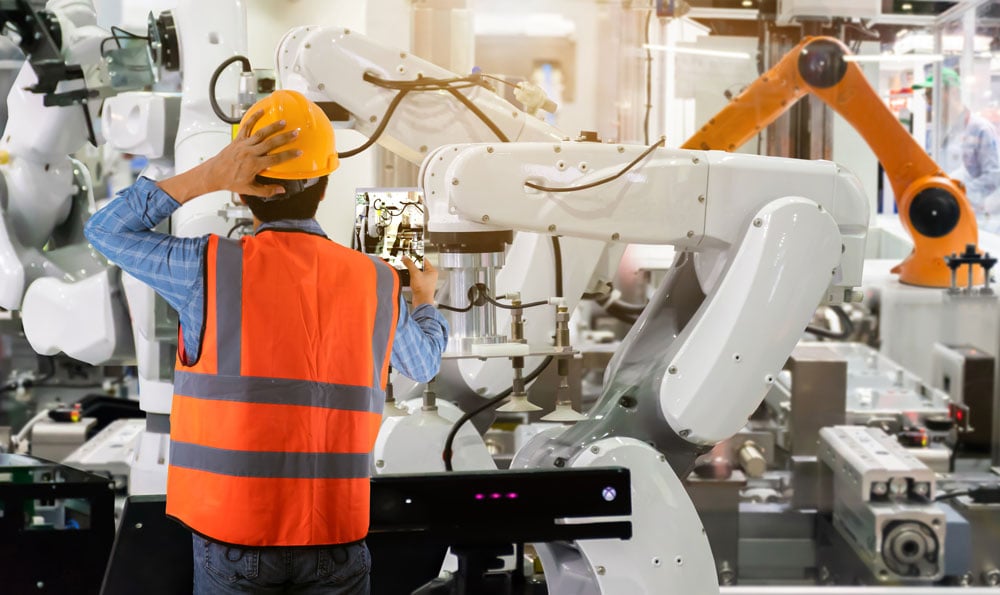What is quality control?
In manufacturing, quality control primarily focuses on ensuring the quality of the final product. It's important to distinguish between quality control and quality assurance. Quality control adopts a production-oriented approach, emphasizing the detection and correction of defects in the final product through inspections and testing. Quality assurance, on the other hand, takes a process-oriented approach, examining production processes, procedures, and systems used.
The importance of quality control in production
Quality control is essential across all industries, but it plays a particularly critical role in manufacturing. The fierce competition compels manufacturers to prioritize quality controls – not just to protect their carefully built brand reputation, but also to ensure customer satisfaction and compliance with regulations.
Stringent standards in sectors such as automotive, pharmaceuticals, and aerospace are designed to protect consumers. By incorporating quality control into the manufacturing process, companies can more easily comply with production regulations, thus avoiding fines or lawsuits. Implementing a quality management system helps maintain oversight in all aspects of quality management, including control and assurance. The finger on the pulse of quality management, so to speak.
Maintaining a strong brand reputation is one of the primary reasons to prioritize quality management, particularly quality controls in the production process. A company's reputation, and thus its brand, heavily relies on consistently high-quality products. When customers trust a brand and its products, they are more likely to remain loyal.
Quality Control, sure – but at which stage of the production process?
The answer is simple and predictable: at every stage! Each production phase has its own form of quality control:
- Factory audit
Always start with a full inspection of the factory you're doing business with, evaluating its location, organization, production processes, facilities, and capacity. - First Article Inspection (FAI)
This control takes place before the first production batch. - During production check
Here, the focus is on monitoring the production process and the quality of the actual product. - Pre-shipment inspection
This phase involves sampling and testing whether the product meets the established quality standards. - Container loading check
This final phase ensures the right products are loaded without damage, sealing and shipping the load upon successful completion.

Quality Control in foreign production processes
Many companies now opt to manufacture their products abroad, especially in countries like China, Vietnam, and Thailand. While there are benefits to producing in these countries, there are also downsides, such as not meeting the expected quality levels. This is often due to the exporter not realizing the product doesn't meet local quality standards. The production process can also be longer than what is typical in Europe.
Does this make manufacturing in Asia too risky or even impossible? On the contrary! However, when you produce in Asia, quality control throughout all the above-mentioned phases is crucial to ensure the quality of your product. Instead of flying back and forth to Asia for every production and phase, it's vital to conduct quality controls through a reliable local quality inspector.
Quality control methods
You might be thinking: all of this sounds very logical. Checking quality at every stage of the production process – I could have thought of that myself. But how do you actually perform these controls? As of 2024, we have various methods, software systems, and robots at our disposal for these checks. Here are some examples:
- Quality control based on weight and size
High-speed weighing modules integrated into the production equipment allow continuous monitoring of weight, immediately detecting even minor production process errors.
A dimensional inspection involves using scanners and lasers to measure the product's shape and size during the process, quickly detecting potential faults and deviations. - Real-Time monitoring using data
This method involves collecting data at various production process stages. The data is used to identify trends and patterns, allowing early detection and resolution of deviations. - AI-based visual systems
With the advent of AI, a significant leap has been made in manufacturing. AI allows for the development of self-learning systems that use cameras and software to inspect products and provide specifications. For example, a system can recognize an incorrect product color.
By incorporating advanced quality control methods and integrating a comprehensive quality management system manufacturers can ensure the highest standards throughout the production process.




